Well, it’s time for TheLushLife.ca’s annual list of the best wines you can buy in Ontario for less than $18. This is all about red, white, rosé and bubbly that tastes a lot better than it costs—the sort of vino that makes it seem like you’ve splurged on a guest, friend or boss because they’re extra-special. (Well, until they Google the price, anyway.)
This year I’ve enlisted the help of Paul Aquino, Head Sommelier, Victoria’s Steak and Seafood, Hamilton, and a member of the Canadian Association of Professional Sommeliers (Ontario branch). So watch for some of his picks below as well (you’ll notice that the two of us actually picked two of same wines!)
All the wines that follow are available at the LCBO.
SPARKLING
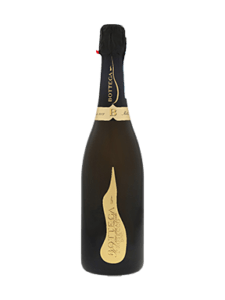 Bottega Il Vino Dei Poeti Prosecco 2019 — Treviso, Italy ($15.75)
Bottega Il Vino Dei Poeti Prosecco 2019 — Treviso, Italy ($15.75)
From Treviso in northeastern Italy, this ever-reliable Prosecco remains one of my go-to sparklings. It begins with a floral apple/pear bouquet, with greener fruits following in the glass. The final product is soft and balanced but with a lively acidity and a hint of bitterness on the finish. Crowd-pleasing bubbly here. 88 (Ted McIntyre)
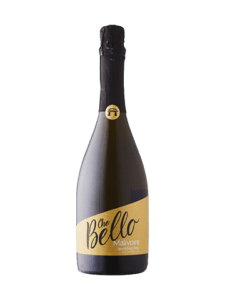 Malivoire Che Bello — Beamsville, Ontario ($17.95)
Malivoire Che Bello — Beamsville, Ontario ($17.95)
This is a bright, Prosecco-styled blend of Riesling, Vidal and Seyval Blanc (a hybrid well-suited to Northern Climates since it ripens early), with a lively aroma of pears and greens apples. The composition seems pretty tight for a Charmat-method bubbly (where the secondary fermentation takes place in steel tanks). On the palate it’s dry, but with no shortage of fruit and a surprisingly long, clean finish. This is a pretty decent sparkling for any occasion, but if you’re looking for a specific food pairing, think eggs or smoked salmon. This is a dangerously easy-drinking summer wine, but at least, at 11% alc., it’s not overly potent. 89 (Ted McIntyre)
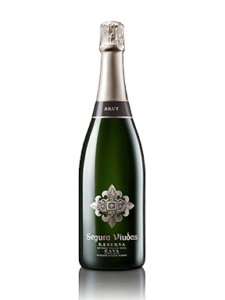 Segura Viudas Brut Reserva Cava — Catalonia, Spain ($15.85)
Segura Viudas Brut Reserva Cava — Catalonia, Spain ($15.85)
Since Cava is made in the same way as Champagne (with the second fermentation occurring in the bottle), expect a tight concentration of little bubbles that will persist through the finish. A blend of 50% Macabeo 30% Xarel·lo and 20% Parellada grapes, this is a complex bubbly for the price—the fruits ranging from apple to orange peel to pineapple, with the expected biscuit notes of a traditionally made sparkling. There’s a little bitterness, but it enveloped by that creamy mouse of bubbles. Another positive note—it’s a damn attractive bottle to gift or open at a dinner party! 89 (Ted McIntyre)
WHITE
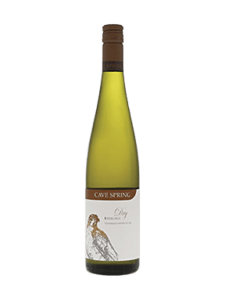 Cave Spring Dry Riesling 2019 — Niagara Peninsula VQA, Ontario ($15.95)
Cave Spring Dry Riesling 2019 — Niagara Peninsula VQA, Ontario ($15.95)
I have been a fan of Cave Spring Riesling since my days working in New York City. The Rieslings planted on limestone-clay soils are ones you can drink now or lay down for a couple of years and still enjoy. Imagine a green apple Jolly Rancher without the sugar. Yes, it’s that intense! This is a refreshing, crisp mineral-driven dry Riesling that cleanses your palette, making you want to drink more. I like to pair its citrus/Granny Smith apple characteristics with Baja fish tacos, oysters from the Bay of Fundy, Bratwurst or wiener schnitzel. (Paul Aquino, Head Sommelier, Victoria’s Steak and Seafood, Hamilton)
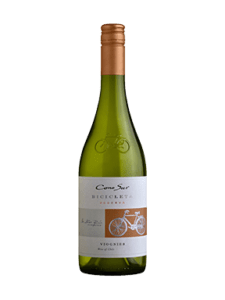 Cono Sur Bicicleta Viognier — Central Valley, Chile ($11.95)
Cono Sur Bicicleta Viognier — Central Valley, Chile ($11.95)
As the “worth-every-penny” meter goes, this rates mighty high. This is a silky, medium-bodied white that’s quite aromatic (think stone fruit, like peaches and apricots). At just 5 grams per litre of sugar content, it qualifies as quite dry, but the fruity contents and smooth mouthfeel make it seem more off-dry in the mouth. A solid pairing for spicy foods and marinated fish and chicken dishes. This might be favoured by oaked Chardonnay fans. 89 (Ted McIntyre)
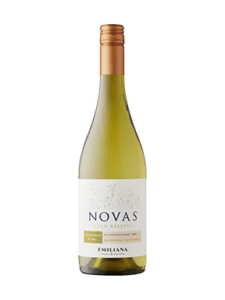 Emiliana Novas Gran Reserva Organic Sauvignon Blanc 2018 — San Antonio Valley, Chile ($15.95)
Emiliana Novas Gran Reserva Organic Sauvignon Blanc 2018 — San Antonio Valley, Chile ($15.95)
Such terrific value here. On the nose there’s bell peppers and hot peppers, soft notes of grapefruit, a salinity it likely owes to the winery’s proximity to the Pacific, and with a mineral vein running through it as though it were poured over slate before bottling. On the palate there’s a lovely acidity—albeit not as much as you’d find in, say, a traditional New Zealand Sauv Blanc. And it is steely smooth, with a little oaking adding volume. 89 (Ted McIntyre)
Errazuriz Sauvignon Blanc — Aconcagua Valley, Chile ($14.95)
When you’re used to that high-citrus/bell-pepper slap in the face of many Sauv Blancs, it’s nice to be gently courted by one with a softer side. There is the traditional lemon/lime/gooseberry that you expect of a Sauvignon Blanc here, but this one leans more toward cut grass and smooth, vegetal, tomato stalk and asparagus sorts of notes. 88 (Ted McIntyre)
 Flat Rock Riesling 2018 — Twenty Mile Bench, Ontario ($17.95)
Flat Rock Riesling 2018 — Twenty Mile Bench, Ontario ($17.95)
This is a really good example what Ontario Riesling can offer at a great quality-price ratio. I love its overall balancing act. It leads with a fragrant nose of stone fruits, citrus and herbs. In the mouth it’s just slightly off-dry in style (22 grams of residual sugar) with more of those peaches and pears in the mouth to make your palate drool, but full of vibrant acidity and the limestone-assisted crispness that certified-sustainable Flat Rock is known for. Pair it up with ham. 11.1% alc. 90 (Ted McIntyre)
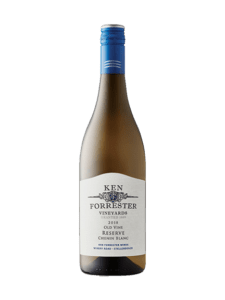 Ken Forrester Old Vine Reserve Chenin Blanc 2019 — Stellenbosch, South Africa ($17.95)
Ken Forrester Old Vine Reserve Chenin Blanc 2019 — Stellenbosch, South Africa ($17.95)
For a variety of reasons, South Africa is able to churn out some great wines for the price, but this Chenin Blanc might be the best value going, which is why so many wine critics go gaga over it. It’s a full-bodied white, with two separate batches hand-harvested from the winery’s older vineyards—one that’s naturally fermented in French Oak barrels and the second in stainless steel tanks to preserve the freshness and the fruit. The 2019 harvest in the Stellenbosch region, while brutal for overall quantity and not particularly good for ripening red grapes, was ideal for Chenin Blanc—with cooler days and nights ramping up the acidy. That means even more balance for the intense, aromatic honeysuckle, melon and stewed apple fruits and silky nature of this wine. If you’re serving chicken or seafood dishes with plenty of spice, this should match well. The latest vintage arrives in the LCBO on Aug. 7, so if you like rich, complex whites, gobble it up while it’s there. 91 (Ted McIntyre)
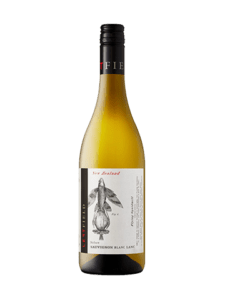 LeftField Sauvignon Blanc 2020 — New Zealand ($16.95)
LeftField Sauvignon Blanc 2020 — New Zealand ($16.95)
The grapes for this Sauvignon Blanc used to be sourced from Nelson on New Zealand’s South Island, but inconsistent harvests there has led to a decision to blend this wine from multiple regions—some from Nelson, some Hawkes Bay, and the majority from Marlborough. The result is a broader spectrum of riper fruit and softer acidity. There’s harmony between notes of grapefruit, Granny Smith apple, lemongrass and passionfruit, with hint of tomato leaf on the nose and a pleasingly smooth texture on the palate. Great with seafood dishes, but also a terrific patio wine! And keep in mind that this used to retail for $19.95! 89 (Ted McIntyre)
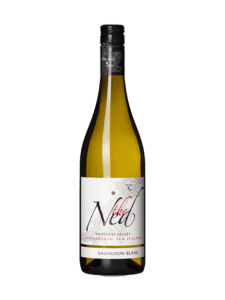 Marisco The Ned Sauvignon Blanc 2020 — Waihopai Valley, Malborough, New Zealand
Marisco The Ned Sauvignon Blanc 2020 — Waihopai Valley, Malborough, New Zealand
The 2020 vintage appears a touch more traditional Marlborough Sauvignon Blanc in style than is typical for this wine—meaning it is less rounded and more on the herbal/gooseberry/lemon/lime side. It’s still great value and finely balanced, with plenty of crisp acidity and a nice mouthfeel. But there’s a little flesh missing that usually makes this Sauv Blanc stand out for me. 13% alc. 89 (Ted McIntyre)
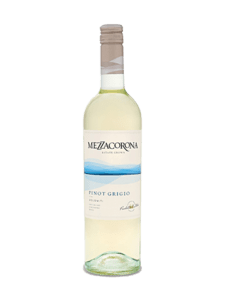 Mezzacorona Pinot Grigio 2019 — Trentino-Alto Adige, Italy ($14.95)
Mezzacorona Pinot Grigio 2019 — Trentino-Alto Adige, Italy ($14.95)
There’s a wet stone minerality, green apple, lime and honeysuckle to the nose, with a smooth palate and nice balancing acidity to follow. I’m generally not a Pinot Grigio fan—and maybe it’s because I’ve met Mezzacorona’s head winemaker, Lucio Matricardi, and know how seriously he takes this particular wine—but this is a rock-solid value from a beautiful spot in the world. At this price, you tend to beware the finish, but this Pinot Grigio holds its own for surprising length. A safe pairing for appetizers or soup, with light fish dishes or salad, or on its own. 88 (Ted McIntyre)
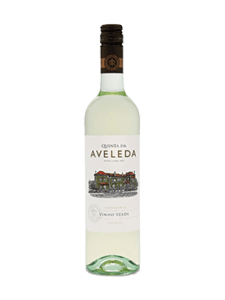 Quinta da Aveleda Vinho Verde 2019 — Vinho Verde, Portugal ($12.95)
Quinta da Aveleda Vinho Verde 2019 — Vinho Verde, Portugal ($12.95)
Imagine if Riesling and Albarino had a baby—that’s this Vinho Verde—a great affordable alternative to Riesling or Muscadet. It’s crisp, with high acid, a slight spritz, grapefruit and herbs. Pair it with Ceviche, oysters, shrimp, octopus and veggie and rice dishes. (Paul Aquino, Head Sommelier, Victoria’s Steak and Seafood, Hamilton)
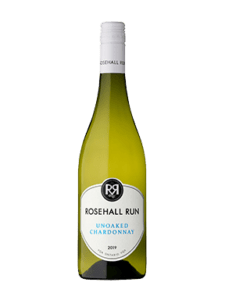 Rosehall Run Unoaked Chardonnay 2019 — Wellington, Ontario ($14.95)
Rosehall Run Unoaked Chardonnay 2019 — Wellington, Ontario ($14.95)
As the name suggests, there was no oak involved in the fermenting or aging process, but there’s still a smooth texture to the palate to conduct its rich citrus and green apple fruit. It’s crisp as well, keeping it light on its feet and making this medium-bodied, Prince Edward County Chardonnay pretty flexible, from patio sipping to earnest food pairing. Rosehall Run suggests marrying it with shellfish such as raw oysters with lemon or crab cake or grilled shrimp, or with lightly buttered pasta or risotto, white meat, or simply prepared fish dishes. 88.5 (Ted McIntyre)
Do you like Chablis but don’t want to travel? Lime, green apple, bread yeast and lees stirring to add richness. This is a great pairing for any light fish dish, though I prefer it with Lemon Pepper Chicken or Chicken Scallopini—something pounded, breaded and fried with tomatoes to provide acidity. (Paul Aquino, Head Sommelier, Victoria’s Steak and Seafood, Hamilton)
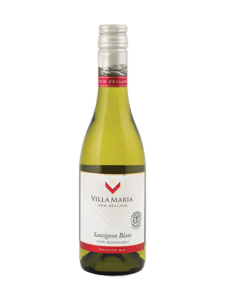 Villa Maria Private Bin Sauvignon Blanc 2020 — Malborough, New Zealand ($17.95)
Villa Maria Private Bin Sauvignon Blanc 2020 — Malborough, New Zealand ($17.95)
Consistently great wine at this price point, but 2020 was an exceptional vintage, adding ripeness and concentration to the composition. This classic Malborough Sauvignon Blanc combines grapes from both the Wairau Valley (providing citrus and tropical fruits) and Awatere Valley (providing lemongrass, herbs and hot peppers). The product of the two is once again a super balance of fruit, acidity and herbaceousness, with a clean, palate-cleansing lime/guava/grapefuit to get your mouth watering, and notes of green apple in a supporting role. Smooth stuff. 91 (Ted McIntyre)
ROSÉ
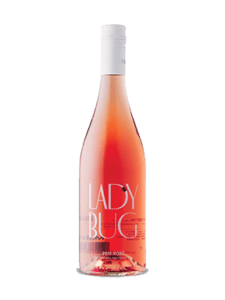 Malivoire Ladybug Rosé 2020 — Beamsville, Ontario
Malivoire Ladybug Rosé 2020 — Beamsville, Ontario
This is a perennial inclusion on this list from master rosé-maker Shiraz Mottiar at the certified-sustainable Malivoire winery. Vegan-friendly, this year’s recipe is pretty much a split of Cab Franc and Gamay, with a splash of Pinot Noir to round it off. Notes of strawberry-rhubarb, pink grapefruit and watermelon lift from the glass. It’s drier than normal on the palate than previous vintages and more subtle overall—which I prefer—with a complex mix of red fruit and pomegranate on the tastebuds. From an aesthetic standpoint, I also love the elegance of the simple 1920s-styled script for its bottle labelling, which hides nothing from the viewer. 89 (Ted McIntyre)
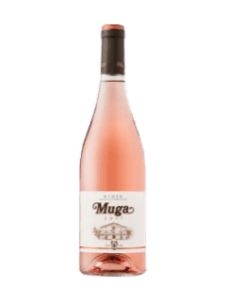 Muga Rosé 2019 — Rioja, Spain ($15.95)
Muga Rosé 2019 — Rioja, Spain ($15.95)
I love the versatility of Spanish Rosé, including this Tempranillo, Garnacha and Viura blend. If one is willing to look beyond Provence—and everyone should—this is an appealing rosé that is dry and easy drinking, with fresh strawberries and floral herbs. I love it with steak, as well as grilled fish and richer salads like a wedge salad with bacon and blue cheese. You can also enjoy it with Spanish hams. (Paul Aquino, Head Sommelier, Victoria’s Steak and Seafood, Hamilton)
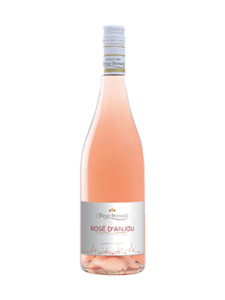 Remy Pannier Rosé D’Anjou 2020 — Loire Valley, France ($14.95)
Remy Pannier Rosé D’Anjou 2020 — Loire Valley, France ($14.95)
The Loire Valley makes great cool-climate rosé out of Cabernet Franc, especially around the city of Anjou. This light-bodied, slightly off-dry rosé features medium-plus acidity and hints of strawberries and raspberries, and goes well with terrines, pâté and charcuterie. (Paul Aquino, Head Sommelier, Victoria’s Steak and Seafood, Hamilton)
RED
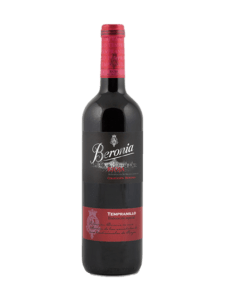 Beronia Elaboración Especial Tempranillo 2018 — Rioja, Spain ($16.80)
Beronia Elaboración Especial Tempranillo 2018 — Rioja, Spain ($16.80)
I’ve been a big fan of this wine for some time now. “Elaboración Especial” means “special production.” While oak barrels are typically toasted to prepare them for wine storage, the barrels for Elaboración Especial (which house this wine for six months prior to bottling) receive a prolonged toasting. The process darkens the cherry aromas and taste of the Tempranillo fruit, but it also seems to bathe it in fireplace smoke. The result is uniquely smoke-infused and succulent (there’s some meaty umami in there too). It’s smooth on the palate with impressive length to the finish. Tee it up with a smoked meat sandwich or barbequed ribs. 89 (Ted McIntyre)
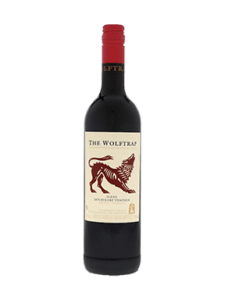 Boekenhoutskloof The Wolftrap 2019 — Franschhoek Valley Western Cape, South Africa ($14)
Boekenhoutskloof The Wolftrap 2019 — Franschhoek Valley Western Cape, South Africa ($14)
Here’s a blend of Syrah (91%), Mourvèdre (8%) and Viognier (1%) that offers up surprising complexity for the price. Medium+ in body, there’s a little bit of oak and pepper in here, but it’s primarily a mix of dark red and black fruit on the nose. On the palate, the tannins are fairly soft, with the Syrah and Viognier bringing a savory element of red currant and plum, while the Mourvèdre provides intense colour, meatiness and a little smoke. This is a perennial crowd-pleaser. 88 (Ted McIntyre)
Casa Santos Lima Confidencial Reserva Tinto 2016 — Lisboa, Portugal ($14.95)
Here’s a great Old World alternative to those fruit-leading California reds. Look for a generous amount of ripe red fruit (plums and cherries, leading to figs) and oak (which imparts chocolate and vanilla) that is well balanced. This is a medium-bodied, smooth-tannin red field berry blend (think Tinta Roriz, Touriga National, Tinta Franca, Alicante Bouchet and more) that goes great with grilled meats on the BBQ and burgers. (Paul Aquino, Head Sommelier, Victoria’s Steak and Seafood, Hamilton)
If you prefer big tannic reds, this might be a bit on the syrupy side for you. But if you’re just looking for something that rates high on the yummy meter, this Portuguese blend of 10 different grape varieties offers delectably dense, dark fruits (primarily prune and blackcurrant), chocolate and light tannins. The texture is a touch thin, but the mid-palate and finish hold on nicely. (It’s crazy that the 2016 vintage is still kicking around in stores—and that bottle aging has clearly helped, although it’s ready to drink now). This will fit well with grilled meats. 88 (Ted McIntyre)
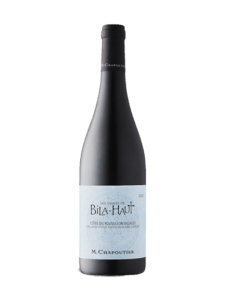 Chapoutier Les Vignes de Bila-Haut Côtes du Roussillon-Villages 2019 — Languedoc-Roussillon, Southern France ($15.95)
Chapoutier Les Vignes de Bila-Haut Côtes du Roussillon-Villages 2019 — Languedoc-Roussillon, Southern France ($15.95)
From the first producer to put Braille on their labels, this medium-bodied blend of Grenache, Syrah and Carignan is another regular on this Top 36 list. Hand-picked from the slopes high up the Agly Valley in Southern France, it’s a well-pieced-together, fleshy, dark red fruit concoction of black cherries, plums and figs, spiced with sage and pepper. Tannins are easy. Drinking it is even easier. 88 (Ted McIntyre)
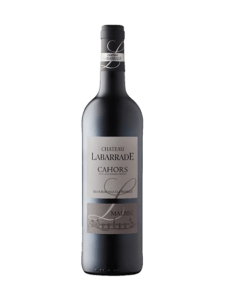 Château Labarrade Cahors Malbec 2018 — Cahors, France ($13.95)
Château Labarrade Cahors Malbec 2018 — Cahors, France ($13.95)
Among the usual suspects on this annual list, this is a dry, smoky Malbec that leans to the dark side in its fruit—think “plums, blackcurrants and blackberries”—with a nip of cassis and baking chocolate in there too, while some robust tannins hold it all together. When you think of Malbec, Argentina traditionally springs to mind, but Malbec has pretty much been the predominant grape in the Cahors region of Southwest France since the 16th century. 88 (Ted McIntyre)
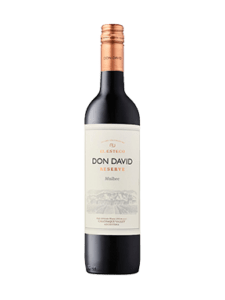 El Esteco Don David Malbec 2019 —Calchaqui Valley, Argentina ($17)
El Esteco Don David Malbec 2019 —Calchaqui Valley, Argentina ($17)
Paying homage to David Michel, who co-founded El Esteco in 1892, this well-rounded Malbec features a nose of charred oak and black cherry/blackberry that gets smoother as you go. The vineyards for this particular wine sit at elevations of 3,000 to 6,000+ feet. That translates into lots of sun and cool nights, ensuring both ripeness and plenty of acidity to balance it all out. Soft tannins. Strong vintage. Quality wine. 90 (Ted McIntyre)
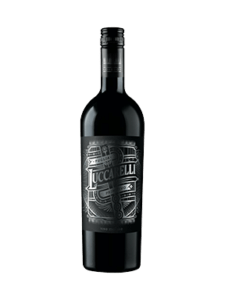 Farnese Luccarelli Primitivo 2020 — Puglia, Italy ($11.75)
Farnese Luccarelli Primitivo 2020 — Puglia, Italy ($11.75)
Puglia, the southern Italian region that forms the heel of Italy’s boot, is renowned for its Primitivo (Zinfandel). Add the fact that 2020 was a great vintage for the region and you get the opportunity to produce some very decent wine at a very inexpensive price. Medium+ in body, the nose is one of dark ripe to overripe plums and prunes, with some vanilla slightly sweetening the mix. While it’s not the sort of wine you want to cellar for special occasions, it’s well worth the price at $11.95. Look for the new label. 14% alc. 88 (Ted McIntyre)
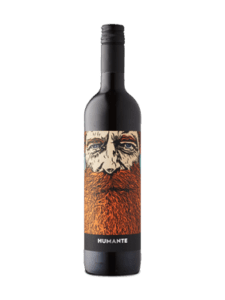 Humante Garnacha 2019 — Navarra, Spain ($9.10)
Humante Garnacha 2019 — Navarra, Spain ($9.10)
Here’s a medium-bodied, very juicy red that’s awash in redcurrant/cherry/plum jam with a waft of herbs as you nose further into the glass. You instinctively wait for that short, off-putting finish (given this absurdly low price), but that shortcoming happily never arrives. There’s nothing deep to contemplate here, just an engaging, flexible, easy drinking red wine that will match great with burgers. And you will surely not forget its distinctive label. 87 (Ted McIntyre)
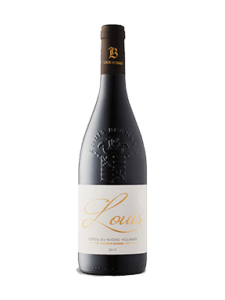 Louis Bernard Côtes du Rhône 2019 — Southern Rhone Valley, France ($14.95)
Louis Bernard Côtes du Rhône 2019 — Southern Rhone Valley, France ($14.95)
This is a well-composed, vegan-friendly blend of Grenache (80%) and Syrah (20%) from a very strong vintage. Quite dry and medium+ in body, its Rhône Valley fruit is sourced all the way from Lyon in the north to Avignon in the south. It features darker red fruit (stewed plums and cherries), with good length on the finish and very smooth tannins. You can cellar it for two to four years, but it’s really meant to be enjoyed now. 88 (Ted McIntyre)
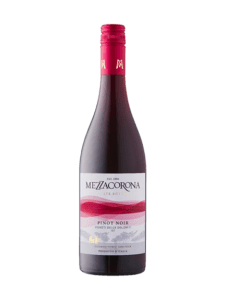 Mezzacorona Pinot Noir 2018— Alto Adige-Trentino, Italy ($14.80)
Mezzacorona Pinot Noir 2018— Alto Adige-Trentino, Italy ($14.80)
Originating from a strikingly beautiful part of the world in the foothills of the Dolomites, this medium-bodied Pinot Noir is nourished by sunshine and the Adige River, which flows down through the Italian Alps in a region renowned for its hillside vineyards. On the nose this features bright red cherry, light spices and some vanilla notes. On the palate, this is definitely Pinor Noir, but more of a lusher, medium-bodied style with a rich raspberry/strawberry lipstick smack to it, and light but gripping tannins. Serve slightly chilled. A nice pairing for chicken and fish. 88 (Ted McIntyre)
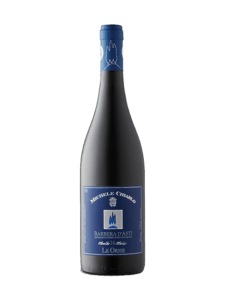 Michele Chiarlo Le Orme Barbera d’Asti 2018 — Piedmont, Italy ($15.95)
Michele Chiarlo Le Orme Barbera d’Asti 2018 — Piedmont, Italy ($15.95)
As the label notes, this has been aged a minimum of 16 months, but there are no other details there. So allow me to fill you in: Blended from four different vineyards and soil types, this is a dry, medium-bodied, ruby red, flavour-drenched Barbera d’Asti. The nose suggests sour black cherries, earth and currants; the acidity quite alive and well. Elegant but full of vim and vigour. 89 (Ted McIntyre)
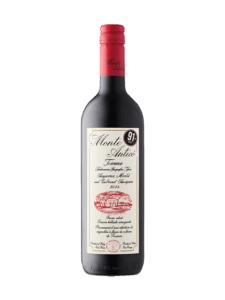 Monte Antico 2016 — Tuscany, Italy ($15.95)
Monte Antico 2016 — Tuscany, Italy ($15.95)
The idea that you can still get a 2016 Sangiovese blend (with Merlot and Cabernet Sauvignon) for $15.95 at the LCBO seems nuts. Medium-bodied and dry, this is a smooth and juicy (think “cherry and plum”) but refined, floral red wine with food-loving acidity and a surprisingly long finish. At just 12.9% alcohol, a couple glasses shouldn’t knock you out. This is a pretty versatile wine with food, with a stylish label, making it a great gift when visiting friends for dinner. Monte Antico, by the way, means “ancient mountain,” a tribute to its Tuscan heritage. 88 (Ted McIntyre)
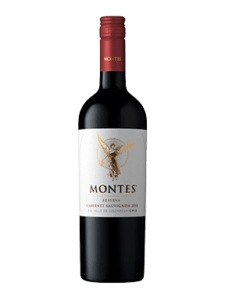 Montes Reserva Cabernet Sauvignon 2018 — Maipo, Chile ($12.95)
Montes Reserva Cabernet Sauvignon 2018 — Maipo, Chile ($12.95)
Oak-induced cassis and cinnamon mesh with cherries and currants on the nose. Medium+ tannins, with a weight that sits between medium and full bodied. A bit bitter on the tongue with a dusting of peppery spice, with dark cherry and blackberry being the predominant fruit. Very expressive overall, especially for the price. 88 (Ted McIntyre)
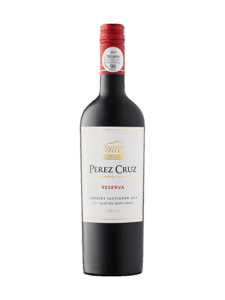 Perez Cruz Cabernet Sauvignon 2018 — Maipo Valley, Chile ($14.95)
Perez Cruz Cabernet Sauvignon 2018 — Maipo Valley, Chile ($14.95)
Cabernet Sauvignon is the backbone of the portfolio at Perez Cruz, and even this entry-level version impresses. It’s composed of 90% Cabernet Sauvignon, with Carménère and Syrah filling out the mix. Dark red fruit and mint immediately lift to the nose. The mid-palate is soft, and the finish is longer and silkier than you’d ever expect for the price. Superb bang for the buck. I hate not picking a full number, but I’m caught in between here, so 88.5 it is. (Ted McIntyre)
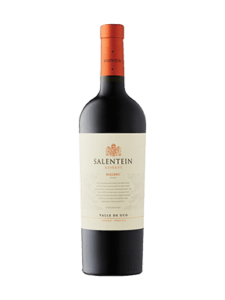 Salentein Reserve Malbec 2018 — Uco Valley, Mendoza, Argentina ($17.95)
Salentein Reserve Malbec 2018 — Uco Valley, Mendoza, Argentina ($17.95)
Seventy percent of this wine was aged a year on oak to add structure and take the edge off, but it’s been hanging out in the bottle for extended time now, softening it a bit further. The grapes are grown at significant altitude (between 3,500 and 5,600 feet), so there’s the expected fresh acidity thanks to non-stop sunny days and very cool nights. On the nose, mossy, herbal, damp forest floor competes with dark blue and black fruit. The palate is fairly weighty and well balanced, with medium+ tannins coating the tobacco-laced dark fruit. Oak is also quite evident. Decanting will help loosen things up. The 14.5% alc. surprised me—it’s definitely well integrated. If you prefer your reds fruity, this might not be an ideal fit. But if you appreciate a little complexity and earthy, dark fruit, give it a whirl. 90 (Ted McIntyre)
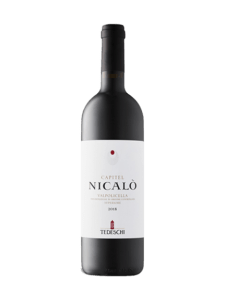 Tedeschi Capitel Nicalò Valpolicella Superiore 2018 — Veneto, Italy ($17.95)
Tedeschi Capitel Nicalò Valpolicella Superiore 2018 — Veneto, Italy ($17.95)
Here’s a marvellous blend of Corvina, Corvinone, Rondinella and about 10% of assorted other local grapes—all plucked off the Moraine Hills in the heart of Valpolicella. It’s made in a traditional Veronese manner: drying of the grapes for a month to reduce 8-10 % of their weight, thereby concentrating sugar, colour and intensity, before being aged between 12 and 18 months in Slavonia oak, and then another six months in the bottle prior to release. A hair shy of full bodied, the final product has some Cabernet-like umph to it, with the warm 2018 vintage imparting a higher alcohol content (14.5%) than normal. There’s all kinds of herbal expression overtop the peppery dark cherry/strawberry fruit, including rosemary and thyme, and a hint of vanilla. This is the probably only wine on this year’s list that, while drinking well right now, I might suggest laying down for a few years to let it soften and develop in complexity. There’s certainly enough acidity, tannin and alcohol to support its evolution, and Tedeschi suggests it can be cellared for up to 10 years. Pair with a juicy steak or a meat-lover’s pizza. 90 (Ted McIntyre)
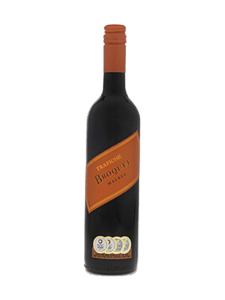 Trapiche Broquel Selected Barrels Malbec 2019 — Mendoza, Argentina ($15)
Trapiche Broquel Selected Barrels Malbec 2019 — Mendoza, Argentina ($15)
Ever been on a casual, cheap date, and then discovered there’s actually much more to the other person than you anticipated? That’s Broquel! Spanish for “shield,” it symbolizes the family heritage of the winery—so you know they’re not messing around here. When you pick her up, she exuberantly declares, “I’m Malbec!”—both on the nose and the palate. Smoky blackberry, blueberry, black cherry, medium tannins, medium acidity—all hovering somewhere between midweight and full-bodied. But then a little leather rises the nose, and mocha, and you realize there’s a pretty impressive concentration of fruit there too, as well as some earthiness. And this date only cost you $15! This could be the start of a beautiful relationship. 89 (Ted McIntyre)
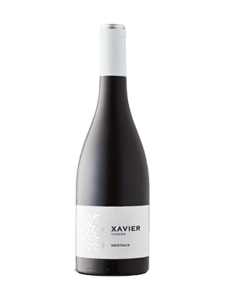 Xavier Vignon Ventoux 2017 —Rhône Valley, France ($17.95)
Xavier Vignon Ventoux 2017 —Rhône Valley, France ($17.95)
There’s a barrelful of flavours layered into this traditional Rhône blend of Grenache (50%), Syrah (30%) and Mourvèdre (20%). Picked from between 800 and 1,300 feet in the Ventoux region in southeast Rhône, the ingredients are highlighted by barrel-aged grapes from a small batch of 50-year-old Syrah vines. The remainder of the blend was aged in concrete to highlight the fruit. The final product is a lush, ripe combination of dark red and black fruit, with the distinctive smoky/herbal garrigue that predominates in the region. Smooth and complex, this is one of my favourite wines on this list. It’ll be hard to find a red wine drinker who won’t like it. 90 (Ted McIntyre)
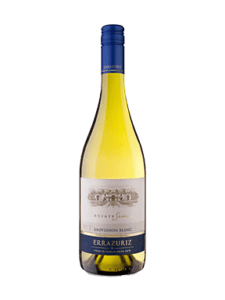
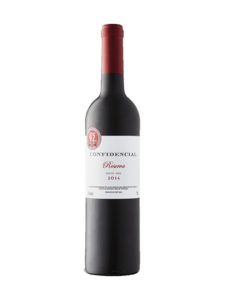

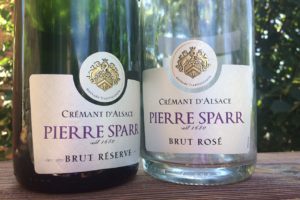

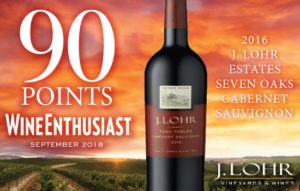
5 Comments
Leave your reply.